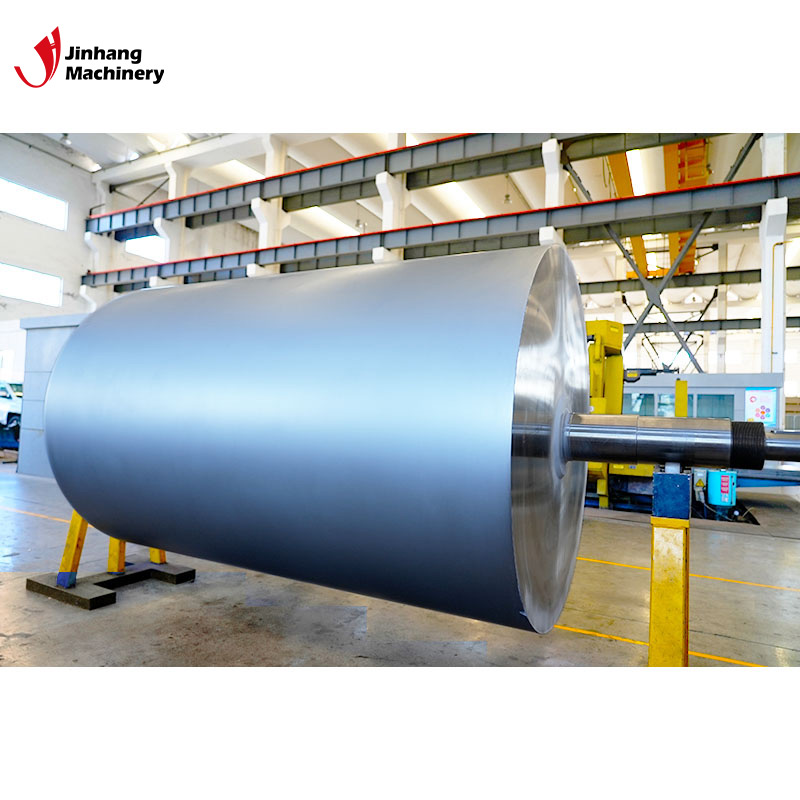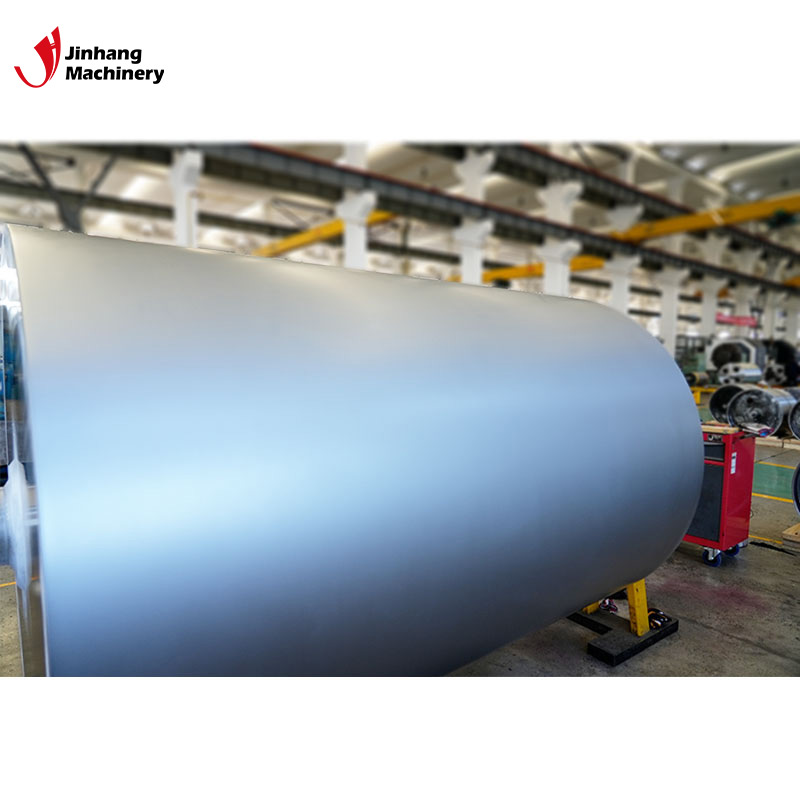How to detect the surface quality of industrial water quench rollers?
Water quench rollers are indispensable key equipment in many industrial production processes and are widely used in metallurgy, casting, machining and other fields. They are under great working pressure during high-speed production, so their surface quality is directly related to production efficiency, equipment life and the quality of the final product. How to detect the surface quality of industrial water quench rollers has become an important issue in the industry. This article will discuss in detail the surface quality detection methods of industrial water quench rollers, including common detection standards, technical means and strategies for dealing with surface defects.

Why is the surface quality of water quench rollers so important?
As a key component of industrial production equipment, the surface quality of water quench rollers has a profound impact on the entire production process. The quality of the surface not only determines the wear resistance and corrosion resistance of the roller, but also affects the contact effect between the roller and the processed material, thereby affecting the production efficiency and the quality of the final product. Especially in industries such as metallurgy and casting, the surface of the water quench roller often directly contacts molten metal or high-speed moving materials. If there are defects on the surface, it will greatly affect its performance and even cause equipment failure or production interruption.
What is the surface quality standard of industrial water quench roller?
When testing the surface quality of water quench roller, the quality standard must be clarified first. The surface quality of water quench roller is mainly reflected in the following aspects:
● Surface finish: The surface of water quench roller needs to maintain sufficient smoothness to reduce friction when in contact with the material and ensure processing quality.
● Surface hardness: Since water quench roller is often exposed to high temperature and high pressure environment, its surface hardness is an important indicator to measure the service life and wear resistance of the roller.
● Surface uniformity: The surface of the roller should be as uniform as possible without significant hardness differences, otherwise it may cause unevenness in the material processing process and affect product quality.
● Defect detection: There should be no defects such as cracks, pores, shedding, peeling, etc. on the surface of the roller. These defects will directly affect the performance of the roller and even cause serious production accidents.

Common water quench roller surface quality detection methods
1. Visual inspection
Visual inspection is the most direct and common surface quality detection method. By visually observing the surface of the water quench roller, technicians can initially find obvious defects on the surface, such as cracks, peeling, pores, etc. This method is suitable for rapid screening and can detect some large defects. However, the accuracy and reliability of visual inspection are low, and the detection effect of minor defects is limited.
2. Surface roughness detection
Surface roughness is a key indicator for measuring the surface finish of the roller, and is usually detected by a roughness meter (Ra meter). The roughness meter can accurately measure the tiny unevenness of the roller surface and give a quantitative result of the surface roughness (such as Ra value). Under normal circumstances, the surface roughness of the water quench roller is required to be low to reduce friction and resistance when in contact with the material. Through accurate roughness detection, the surface finish of the roller can be effectively evaluated to determine whether it meets the design requirements.
3. Hardness test
Hardness is another key parameter for the surface quality of the water quench roller. Common hardness test methods include Vickers hardness, Rockwell hardness, and Brinell hardness. By performing hardness tests on the roller surface, its wear resistance and high temperature resistance can be evaluated. Hardness testing usually requires the use of a special hardness tester, selecting multiple points on the surface of the roller for testing and calculating the average value. For water quench rollers, the uniformity of surface hardness is very important. A roller surface with too low or uneven hardness may cause faster wear and cracks.
4. Non-destructive testing
Non-destructive testing technology is an important testing method, especially for workpieces that cannot be cut or destroyed. For surface defect detection of water quench rollers, commonly used non-destructive testing methods include:
● Ultrasonic testing: The ultrasonic beam penetrates the surface of the roller to detect whether there are defects such as cracks and pores inside it. This method can effectively detect defects below the surface and avoid hidden defects that may be missed by traditional methods.
● Magnetic particle testing: Magnetic particle testing is usually used for surface defect detection of ferromagnetic materials. By applying a magnetic field to the surface of the roller and applying magnetic powder, cracks or defects on the surface will appear.
● Liquid penetrant testing: This is an effective method for finding surface cracks. By applying a penetrant and developing it after a period of time, the cracks will appear.
These non-destructive testing methods can help inspectors understand the surface quality of water quench rollers more comprehensively and deeply, thereby ensuring the reliability of rollers.
5. Chemical composition analysis
In addition to the detection of surface morphology and physical properties, chemical composition analysis can also provide strong support for the quality inspection of water quench rollers. Through chemical composition analysis, it can be ensured that the composition of the roller surface material meets the requirements and avoid surface defects caused by unqualified material composition. For example, the hardness and wear resistance of the roller are closely related to the chemical composition of its surface material. By analyzing the alloy composition of the roller, its wear resistance, corrosion resistance and other characteristics can be predicted.
6. X-ray fluorescence analysis
X-ray fluorescence analysis is a very accurate detection method suitable for surface composition analysis of metal materials. This technology identifies the chemical element composition by measuring the fluorescence of the roller surface after being excited by X-rays. In this way, the uniformity and quality of the roller surface coating can be effectively evaluated to ensure that the surface coating achieves the expected effect.

How to determine whether the surface defects of the water quench roller affect its use?
Although the surface of the water quench roller may have defects of varying degrees, not all defects will affect the roller's service life or production efficiency. To determine whether these defects have an adverse effect on the performance of the water quench roller, the following factors can be considered:
● Size and depth of defects: Small scratches or slight surface irregularities usually do not have much impact on the roller's performance. However, if the defects are larger or deeper, they may affect the roller's wear resistance and high temperature resistance.
● Location of defects: If the defects are concentrated in the key working area of the roller, it may directly affect the processing quality, resulting in uneven heat conduction, excessive friction and other problems during the production process.
● Type of defects: Defects such as cracks, peeling and pores may cause the roller to break or shorten its service life, so special attention should be paid.
● Conditions of use: The surface quality of the water quench roller has different requirements in different working environments. For example, when working under high temperature or high pressure conditions, surface defects may accelerate the loss of material, thereby shortening the roller's service life.
Precision Rolls for Every Industry – Custom Solutions at Low Prices
JH Machinery offers a full range of custom rolls designed to enhance the performance of your industrial machinery. We manufacture rolls for various sectors including mining, steel production, and automotive testing. Our rolls include rubber, polyurethane, and tungsten carbide-coated types, all manufactured to meet your specific requirements. We provide customized solutions at affordable prices, with bulk discounts available for wholesale orders. For high-quality rolls at low prices, contact us today for quotes and detailed pricing information.
